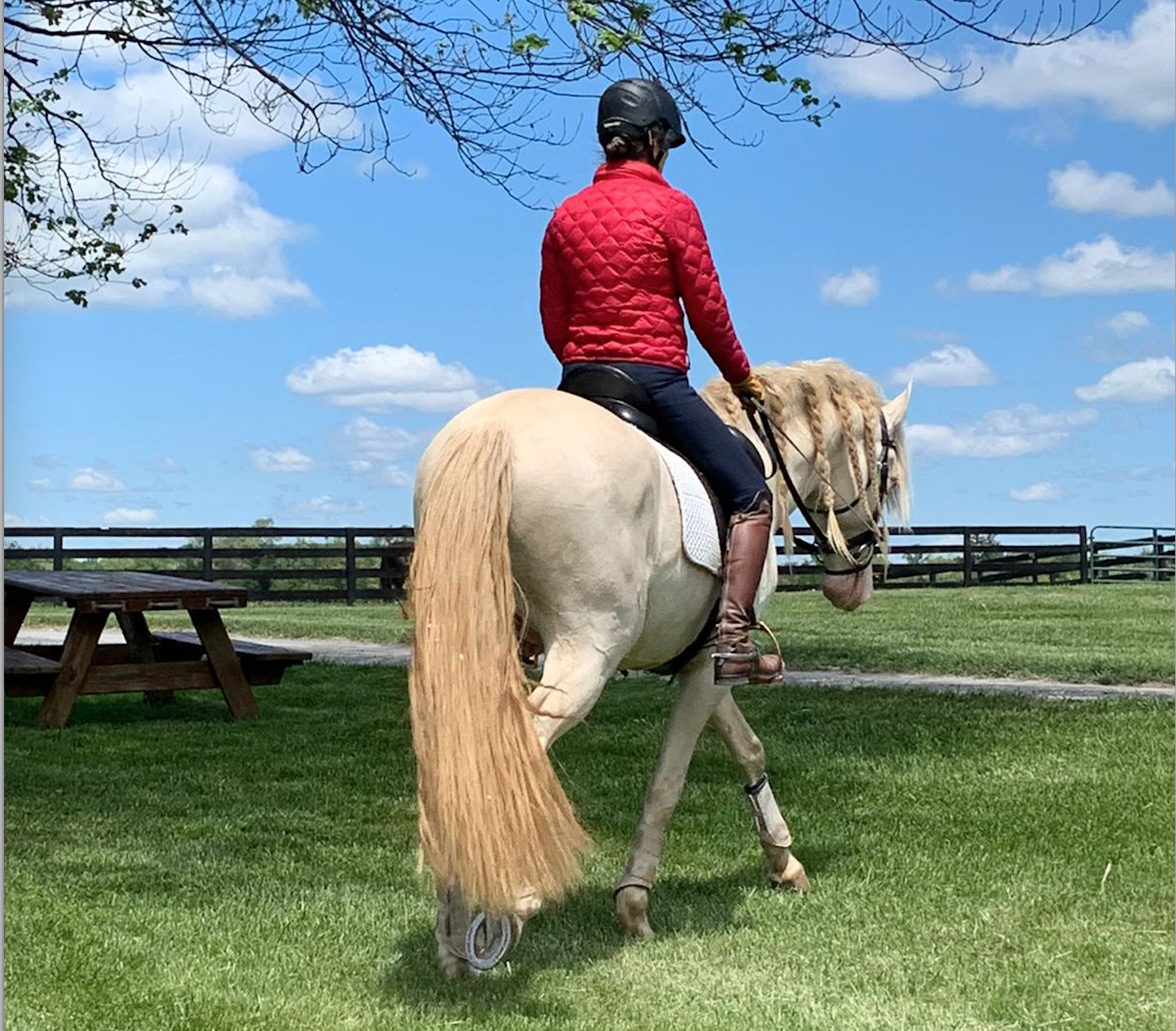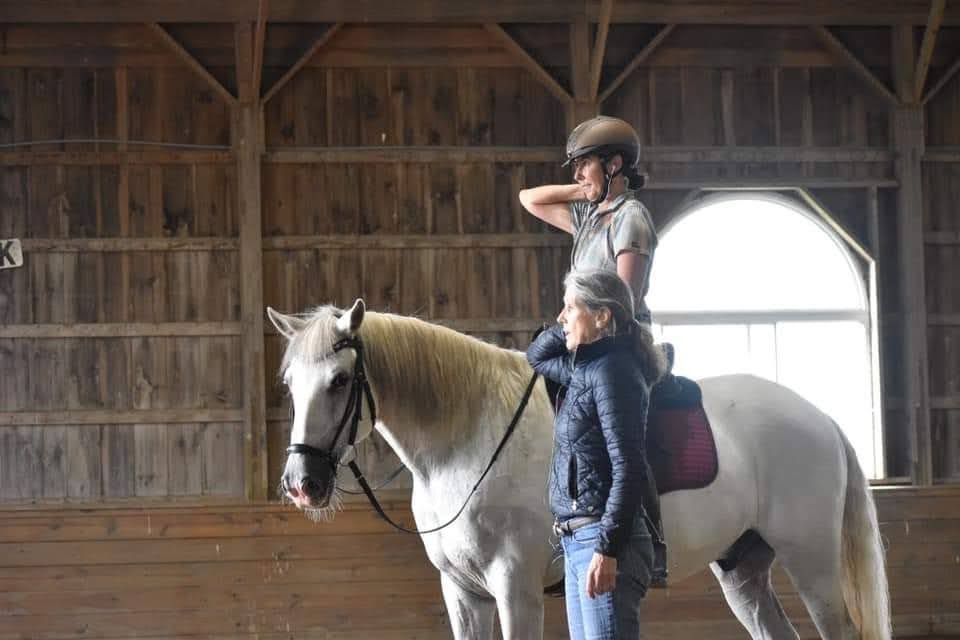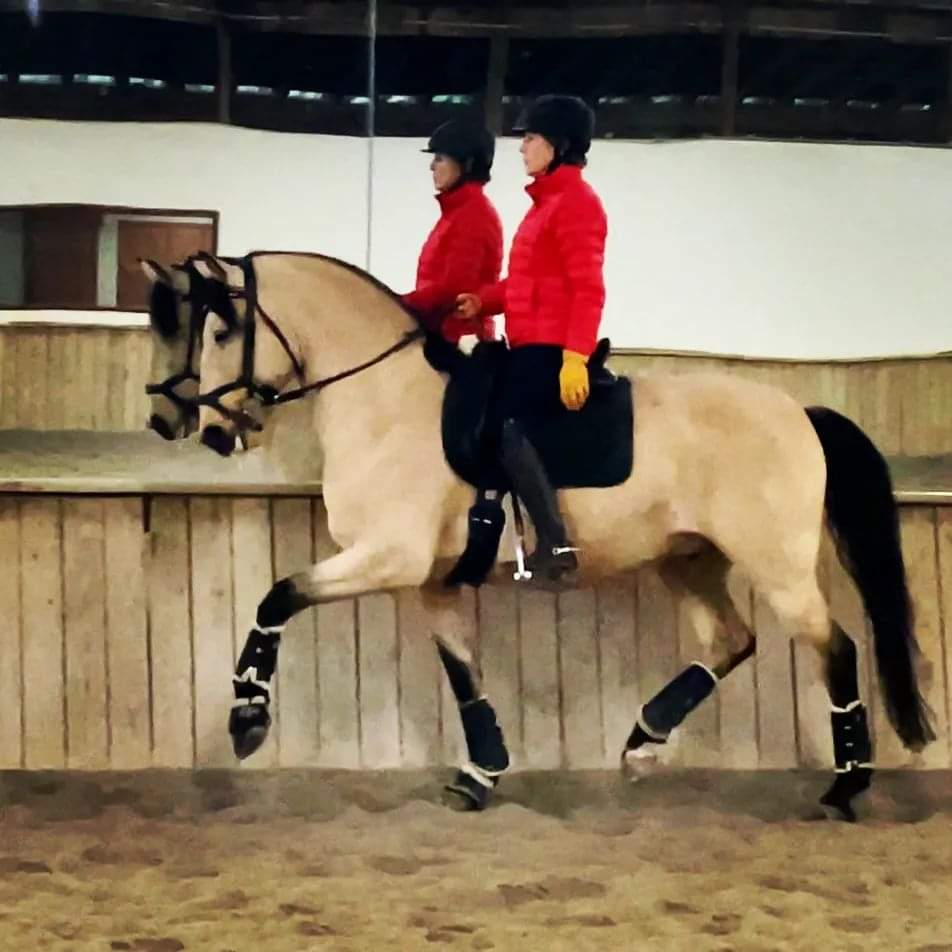- May 12, 2025
Achieving Cranial-Sacral Harmony Through Neck Alignment
- Felicitas von Neumann-Cosel
- 0 comments

Have you ever felt disconnected or unbalanced while riding? Achieving a harmonious connection with your horse starts with understanding your own body. Today, we'll delve into a powerful technique that focuses on neck alignment to unlock your cranial-sacral connection, leading to a more balanced and effective ride.
Finding Your Cranial Point
The starting point for this technique is locating your cranial point or occipital hollow, the key to unlocking your cranial-sacral connection. To find it:
Positioning: Gently place your fingers at the base of your skull, right where it meets your neck.
Exploration: You'll feel a small, subtle indentation or "dimple" in this area. This is your occipital hollow.
Significance: This point is crucial because it's where the base of your skull (occiput) connects to your cervical spine. It's a key area for influencing the flow of cerebrospinal fluid and the overall balance of your nervous system. Changes or tension in one area can affect the other.
Gentle Awareness: Avoid pressing too hard. Simply become aware of the subtle curve and indentation.

Connecting Neck and Sternum: Posture and Lightness
Once you've located your occipital hollow, the next step is to connect your neck alignment to your sternum. This creates a chain reaction of postural improvement:
Elongation: Gently imagine lifting your ears away from your shoulders. This subtle movement will lengthen your neck, causing the occipital hollow to fill slightly and your chin to drop softly.
Spinal Connection: As you lengthen your neck, consciously feel this movement extending down your cervical spine, through your thoracic spine (the back of your ribcage while your sternum is located in the front of the ribcage), and into your lumbar spine, finally reaching your sacrum (the triangular bone at the base of your spine).
Cranial and Sacral Alignment: The sensation should be one of a continuous, gentle lengthening. Visualize a line of energy flowing from the base of your skull, and down to your sacrum, creating a unified, vertical alignment.
Ribcage Lightness: You should experience a sensation of your sternum in the front of the ribcage lifting and becoming lighter. This is because the lengthening of the neck releases tension in the upper back and shoulders, allowing your ribcage to expand more freely. You might almost feel buoyant with more awareness of your ribcage.
Pelvic Engagement: As the sternum lifts, it influences the position of your pelvis. You should feel a subtle engagement of your core muscles, lengthening your lower back and allowing your pelvis to become more balanced and stable.
Helmet Adjustment: If you think of gently lowering and stabilizing the brim of your helmet, it will highten your awareness of head and neck position and unwanted movement of the head.
Shoulder Relaxation: This neck, sternum, and sacral connection allows your shoulders to relax and naturally fall back, promoting better posture.

"Imagine a string gently pulling the top of your head upwards, creating space between your vertebrae, and creating a straight line down to your sacrum"
Application to the Horse
Balance and Harmony
This neck alignment technique isn't just about your posture; it directly impacts your horse's performance:
Balance in Trot and Canter: Maintaining an elongated neck and aligned spine during trot and canter allows you to balance your head more effectively, while h keeping the right pelvic angle that keeps your seat bones forward. This stability translates to a more stable seat and a more balanced horse.
Lower Back and Sacral Connection: When your neck and sacrum are aligned, it allows your lower back and sacrum to engage more effectively, by helping to create a stable and neutral pelvis position. This connection facilitates the natural swinging motion of your hips and the absorption of the horse's movement.
Horse's Response: A rider with a balanced cranial-sacral connection and supple hips will have a more relaxed and responsive horse. The horse will feel your subtle aids more clearly, leading to smoother transitions and improved communication.
Improved Communication: When the rider is balanced, the horse is able to perform better, and the rider is able to give more precise aids.
Riding as a Partnership: This technique helps create a more harmonious partnership between horse and rider, where both are working in sync.
